Marlin 1895 Review
The Marlin Model 1895 is a lever-action rifle that has carved out a significant niche in the world of firearms due to its powerful chambering, robust design, and historical significance. This rifle’s origins trace back to the late 19th century, embodying the era’s innovative spirit and the evolution of repeating rifles. Over the years, it has undergone various modifications and updates, solidifying its status as a favored choice for hunters, sport shooters, and collectors alike.
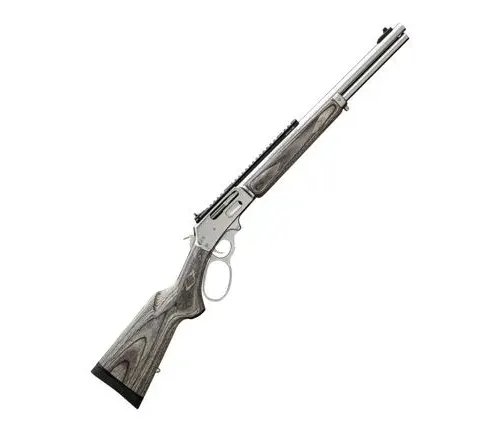
Marlin 1895 Specifications
- Brand Marlin
- Model 1895
- Action Lever
- Caliber .45-70 Gov’t
- Barrel 22″
- Capacity 4+1
- Weight ~7 lbs
- Length ~40.5″
- Stock Walnut
- Sights Adjustable
- Finish Blued
Historical Context
The Marlin Model 1895 rifle, a significant innovation in firearms history, was introduced by the Marlin Firearms Company in the year 1895. This company, founded in 1870, has a rich legacy in the development and manufacturing of firearms, with the Model 1895 standing out as a pivotal addition to its lineup. Designed to accommodate larger cartridges, the Marlin Model 1895 was a response to the growing need for a more powerful rifle capable of hunting larger game animals and delivering enhanced performance at greater distances.
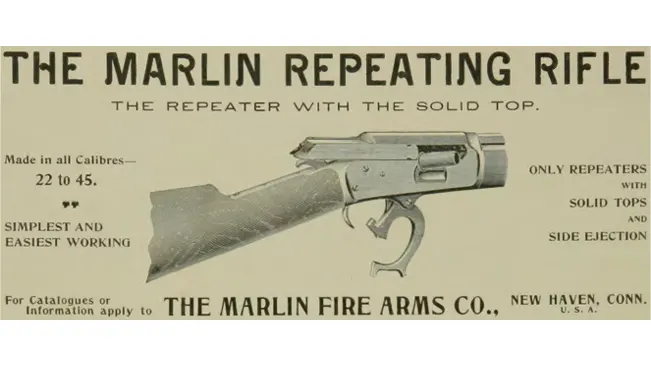
This leap in firepower and range capabilities represented a major advancement over earlier models, which were limited by the size of the cartridges they could chamber. The introduction of the Model 1895 marked a significant evolution in rifle technology, offering hunters and shooters a robust platform for a wide range of applications, from sport hunting to tactical uses. Its design catered to the demands of the times, providing a solution that was both innovative and practical, ensuring its place in the annals of firearms history
Design and Features
The modern Marlin 1895, especially the versions produced after its reintroduction in the 1970s, is known for its solid, all-steel construction and the smooth action of its lever mechanism. A key feature of the Marlin 1895 is its chambering for the .45-70 Government cartridge, a large, powerful round that dates back to 1873. This cartridge is renowned for its stopping power, making the rifle suitable for hunting large game, including deer, elk, and even bear, within reasonable distances.

One of the distinctive characteristics of the Marlin 1895 is its side-ejection system, which contrasts with the top-ejection design found in some other lever-action rifles. This feature facilitates the easy mounting of optical sights atop the receiver, enhancing the rifle’s versatility and accuracy. Additionally, the rifle incorporates a tubular magazine, typically holding four to six cartridges, depending on the specific model and the length of the barrel.
Design and Construction
Lever-Action Mechanism
The lever-action mechanism, a distinctive firearm design innovation, stands ahead of its time as it revolutionized the speed and power of swift shooting. It greatly advances the practicality and sporting game when used for hunting and game shooting. In this design, the single-stroke system helps to achieve an astonishing shot-to-shot cycle time, a vital plus in the face of moving targets or scripted competitions.

Mere thumb movement on the lever near the trigger guard lets seeturs eject spent shells and chamber the next round in one, fluent cycle, so downtime between shots could be minimized. This system not only simplifies the reloading procedures but also allows the shooter to maintain his/her concentration and position, essential for the precision and quickness of missions in the dynamic nature of the world. The lever action rifles, critically valued for their reliability and the ability to shoot consistently, offer an imposing tactical advantage, the capability to shoot multiple shots in quick sequence (one of the strongest factors that often determine the success of hunting and competition). Furthermore, the operating mechanics of the lever-action system itself stand for multifunctional design, because it combines efficiency and user-friendliness with the important tradition of historical accuracy. Hence, such a solution is a favored one among agricultural enthusiasts and collectors who appreciate the perfect mixture of modern and old times.
Side Ejection System
The side ejection system applied to the Marlin 1895 is a remarkable step for the design of the lever gun which differentiates this model from others that have a top ejection mechanism. This innovative feature ejects spent cartridges to the side, rather than upwards, which serves a critical functional purpose: it reduces the complexity and headaches associated with scope and optics mounting on a rifle.

The implementation of the older top ejection systems not only disrupts the installation and operation of optical devices but also restrains a gunner from using contemporary sighting devices to improve their weapons’ accuracy and range. Moreover, the side ejection system has made the operation of Marlin 1895 more comfortable and versatile by maximizing its performance in several shooting categories. Adding the option of leveraging the latest in designer optics is a bonus for shooters in all settings, whether hunting where long-range shots are demanded or in competition in which precision is the key to victory. Such innovation by the company is a clear indication of its willingness to give shooters rifles that not only uphold the time-honored lever action dependability but are also ready for contemporary improvements.
Solid Steel Construction
The Marlin 1895’s steel frame construction demonstrates the gun’s ultimate toughness as well as dependability, equally important features of a firearm expected to stand up to adverse conditions. This sturdy construction doesn’t only guarantee that the rifle will be able to resist the physical challenges of intensive use in varied environments like those found in the forest of the hunt where it is often raining and thick with foliage and also the dust and grit of the shooting range, but it is also meant for the consistency and longevity of the rifle’s performance over time.
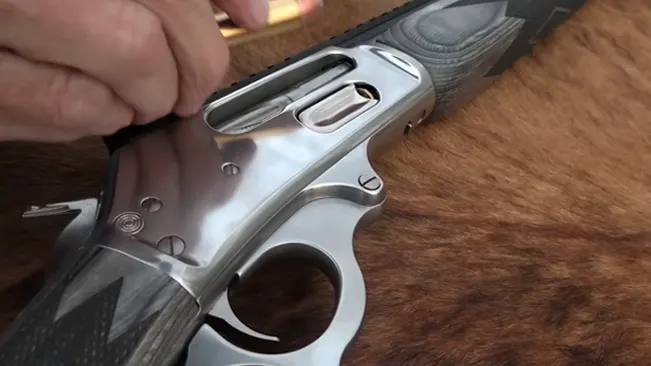
The selection of steel as the main material component of the rifle provides considerable strength to it and further plays the role of resistance against wear, corrosion, and impact. This flexibility ensures exactness and feasibility, especially in cases where precision and dependability can correspond to the correct results rather than the wrong results. Stout steel body design also contributes to the balance and steadiness of the rifle, hence it has a positive impact on the accuracy and controllability of the shooter. The preferment of such a solid design corresponds to the company’s commitment to quality and durability therefore supplies shooters with not only fulfilling but also exceeding the requirements of diverse types of shooting competitions. This commitment to quality is the reason why people who are interested in combining old craftwork and reliability will certainly prefer the Marlin 1895 to other similar models.
Tubular Magazine
The magazine of the Marlin 1895 is located underneath the barrel. This magazine was designed to carry the cartridges in a tubular form in a way that the magazines can store up to 4 to 6 cartridges, depending on the size of the model and barrel length.

The like-this configuration of the machine provides a low-profile streamlined form factor for enhanced ease of handling and maneuverability needed for the probability of the hunt. Furthermore, it permits easy and rampant operation of the cartridge, which is an important factor of reliability and performance. Consequently, the skill of correlating the modern design concept with ergonomics reflects the Marlin’s spirit of innovation, which makes the model of their rifle a preferred one all over the world for its effectiveness and ease of use.
Customization Options
the Marlin 1895, special to this particular type of rifle, permits for easy personalization through various aftermarket accessories like stocks, forends, sighting systems, and large-loop levers.

These are the changes that can affect usability, accuracy, and ergonomics, offer customized individual requirements, and match with the shooting conditions. The firearm was designed to easily upgrade and support the swapping of parts and add-ons which would make it suitable for hunters, sport shooters, and technicians who are looking for firearms to be highly personalized.
Sighting Options
The Marlin 1895 rifle accommodates a wide range of sighting options to enhance accuracy and target acquisition, offering owners the choice of traditional iron sights for durability and reliability, ghost ring sights for quicker target engagement with a broader field of view, and modern optical sights including scopes for magnified views at long range, and red dot sights for fast, intuitive aiming.
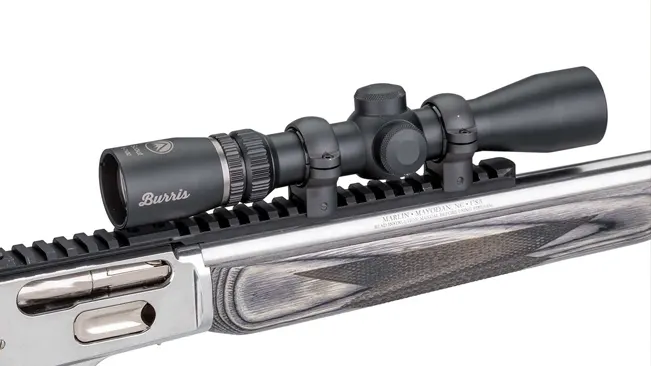
These options allow for extensive customization, ensuring that the rifle can be tailored to suit various shooting activities and individual preferences, making it versatile for everything from precision long-range shooting to dynamic competitive events and versatile hunting scenarios
Variants

Guide Gun (1895G)
Features a shorter barrel for improved maneuverability in brushy or wooded environments.

Stainless (1895SBL)
Offers stainless steel construction for enhanced corrosion resistance, a large-loop lever for operation with gloves, and comes factory-equipped with a rail for optics.

Cowboy (1895CB)
Characterized by a longer octagonal barrel, providing a traditional look and potentially improved accuracy over longer distances.
Pros and Cons
Pros
- Chambered for large cartridges, suitable for big game hunting.
- Lever-action mechanism allows for fast reloading and shooting.
- Wide range of aftermarket accessories for personalization.
- Solid steel construction ensures longevity and reliability.
- Supports iron, ghost ring, and optical sights for improved accuracy.
Cons
- Heavier than some modern hunting rifles, which may affect maneuverability.
- Powerful cartridges produce significant recoil, which may not suit all shooters.
- The tubular magazine holds fewer rounds compared to some modern rifles.
My Personal Maintenance Routine Marlin 1895

- Regular Cleaning After each use, thoroughly clean all parts to remove dirt, grime, and residues. This prevents buildup and corrosion.
- Lubrication Apply appropriate lubricants to moving parts to ensure smooth operation and protect against wear and rust.
- Inspection Conduct a detailed inspection for signs of wear, damage, or malfunction. Check for loose screws, worn parts, or anything out of the ordinary.
- Tightening Regularly tighten all screws, bolts, and fittings to ensure everything is secure and operates correctly.
- Protective Coating Apply a protective coating to metal surfaces to guard against rust and corrosion, especially if storing equipment for an extended period.
- Storage Store equipment in a dry, clean environment. Use moisture-absorbing products if necessary to prevent rust.
- Usage Monitoring Keep track of usage and perform maintenance checks at regular intervals or after a certain number of uses.
- Parts Replacement Replace parts that are worn out or damaged to maintain functionality and safety.
- Professional Servicing Annually or as needed, have your equipment checked and serviced by a professional to ensure it remains in optimal condition.
- Record Keeping Maintain a log of all maintenance activities, including dates, actions taken, and any parts replaced. This helps in planning future maintenance and identifying recurring issues.
Additional Tips

- Take the time to learn about your specific equipment’s maintenance needs and best practices. Manufacturer manuals and online forums can be great resources.
- Invest in high-quality cleaning and maintenance supplies. Quality lubricants, cleaners, and tools can make a significant difference in the effectiveness of your maintenance routine.
- Always prioritize safety when performing maintenance. Ensure the equipment is safely unloaded, disconnected from power sources, or otherwise made safe before beginning any work.
- Be mindful of the environment where you store and use your equipment. Extreme temperatures, humidity, and exposure to dust or chemicals can necessitate more frequent maintenance.
- Address any problems or malfunctions immediately, even if they seem minor. Small issues can quickly escalate into major problems if left unattended.
Marlin 1895 Performance Evaluation: My Expert Ratings and Insights
| Aspect | Review Summary | Score |
|---|---|---|
| Maintenance | Regular, detailed maintenance extends equipment life and ensures peak performance. | 10/10 |
| Handling | Proper handling and usage techniques can significantly reduce wear and prevent accidents. | 9/10 |
| Upgrades | Investing in quality upgrades can enhance functionality and prolong equipment lifespan. | 8/10 |
| Training | Continuous learning and training on equipment use and maintenance can improve efficiency and safety. | 9/10 |
| Environmental Considerations | Proper storage and use according to environmental conditions prevent damage and maintain reliability. | 9/10 |
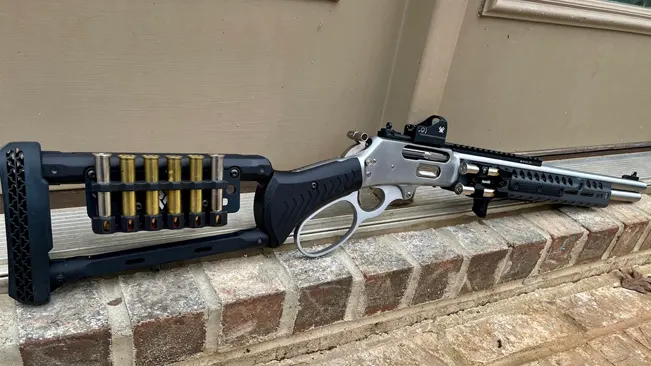
Conclusion
The Marlin Model 1895’s powerful chambering and reliable performance have made it a popular choice among hunters pursuing large game in North America. Its ease of use, combined with the potent .45-70 cartridge, also makes it a suitable option for defense against large predators in wilderness areas.
The rifle’s enduring legacy is a testament to its design’s success and its ability to adapt to the needs of shooters and hunters through more than a century of technological advancements. Today, the Marlin 1895 continues to be celebrated for its historical significance, robust construction, and formidable capabilities, securing its place in the annals of American firearms history.
FAQs about Marlin 1895
- What is the best way to clean and maintain my equipment after use?
Regularly clean your equipment with appropriate cleaning solutions and tools designed for its material and components. Follow up with proper lubrication and storage. - How often should I perform maintenance checks on my equipment?
Perform basic maintenance after each use and a comprehensive check every 3-6 months, depending on the frequency of use and manufacturer recommendations. - Can I perform repairs myself, or should I seek professional help?
For minor repairs and maintenance, DIY is often sufficient if you have the necessary skills and tools. However, for complex issues, consulting a professional is advisable. - What are the signs that my equipment needs servicing?
Unusual noises, decreased performance, difficulty in operation, or visible wear and damage are common signs that your equipment may need servicing. - How can I ensure my equipment operates efficiently for as long as possible?
Follow the manufacturer’s maintenance schedule, use the equipment as intended, and address any issues promptly to prevent further damage. - Are aftermarket parts and accessories worth the investment?
Aftermarket parts can enhance performance and customization but ensure they are compatible with your equipment and do not void any warranties. - What’s the best way to store my equipment when not in use?
Store in a clean, dry environment. Use protective covers if available, and remove batteries or relieve tension if applicable to prevent wear. - How can I improve the accuracy and performance of my equipment?
Regular maintenance, upgrading certain components, and practicing with your equipment can all improve accuracy and performance. - What should I do if my equipment gets wet or is exposed to extreme conditions?
Dry it thoroughly as soon as possible and perform a full maintenance check to prevent rust or damage from extreme conditions. - Where can I find reliable information and tutorials for maintaining my equipment?
Consult the manufacturer’s website, user manual, or official forums. YouTube and specialized websites also offer tutorials and advice.
We’re eager to hear from you! Share your personal experiences and thoughts about the Marlin 1895 in the comments section below. Whether it’s about its performance, customization, or how it stands up in various shooting scenarios, your insights could greatly assist fellow enthusiasts and potential owners in making well-informed decisions. Let’s create a valuable resource together!
Latest Post
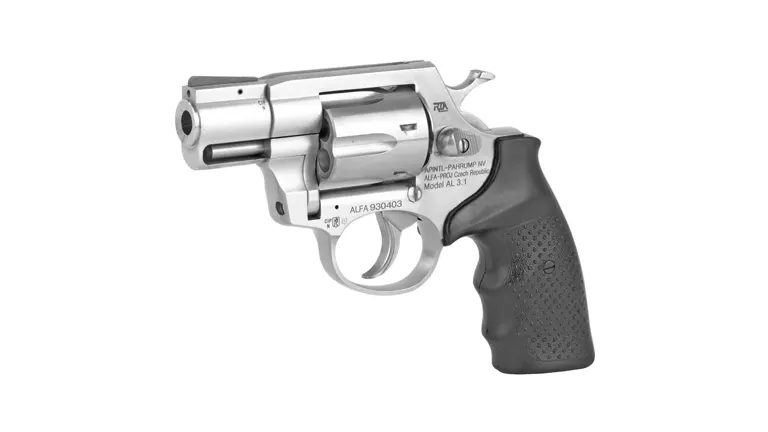
Rock Island Armory AL3.1 Review
Rock Island Armory AL3.1 revolver with a matte stainless finish and a textured grip.March 8, 2024
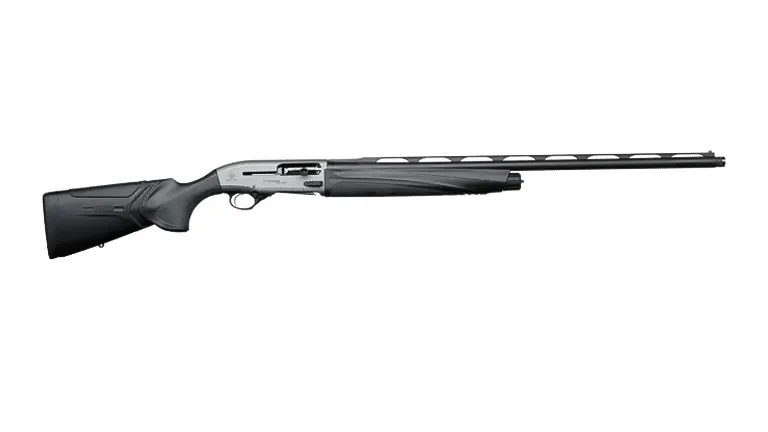
Beretta A400 Xtreme Plus Review
Explore the Beretta A400 Xtreme Plus, a 12-gauge, 3 ½” semi-auto with a 3+1 capacity,...March 7, 2024

Smith & Wesson Model 49 Bodyguard Review
Explore the Smith & Wesson Model 49 Bodyguard, a .38 Special with a compact 1.875″...March 7, 2024
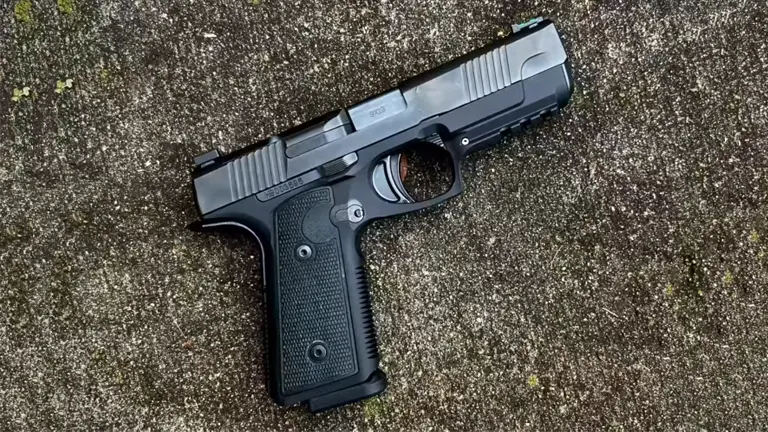
Daniel Defense H9 Review
Discover the Daniel Defense H9 in 9mm Luger, a semi-auto with a 4.5″ cold hammer-forged...March 4, 2024
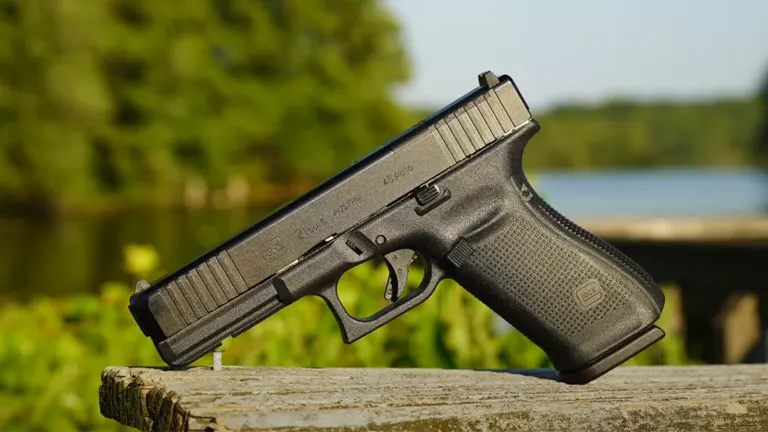
Glock 21 Review
Experience the power of the Glock 21 in .45 ACP, featuring a 13-round capacity, 4.60″...March 4, 2024
Weekly Newsletter
Do you want to get notified when a new article is added to Guncritic? Sign up for our newsletter and you'll be among the first to find out about new articles and reviews.
Comment